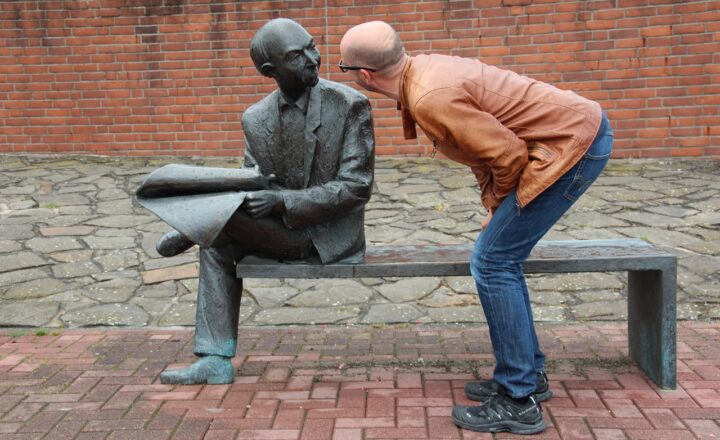
Throughout history, humanity has always sought to build, create, and innovate, leading to spectacular feats of engineering that exemplify both imagination and capability. From ancient structures to modern marvels, these engineering achievements have often pushed the boundaries of what was thought possible. In this article, we will explore some of the most incredible engineering feats that stand testament to human ingenuity, highlighting their historical significance and the technological advancement each represented.
1. The Great Pyramid of Giza
The Great Pyramid, completed around 2560 BC, is the oldest of the Seven Wonders of the Ancient World and the only one to remain largely intact. As the tomb of Pharaoh Khufu, this monumental structure demonstrates the advanced engineering skills and workforce organization of ancient Egyptians. Consisting of approximately 2.3 million blocks of stone, each weighing between 2.5 tons and 15 tons, the Great Pyramid stretches to a height of 481 feet (146.6 meters).
Despite being constructed over 4,500 years ago, the precision and alignment of the pyramid remain astonishing. Its base covers an area equal to that of 13 acres, and the accuracy of its sides is such that they are almost perfectly oriented to the cardinal points.
2. The Roman Aqueducts
Engineered to supply water to cities and towns across the Roman Empire, the aqueducts are a marvel of water management technology. Many of these structures, such as the Aqua Appia and Aqua Claudia, utilized a gravitational flow system, covering vast distances—sometimes up to 50 miles—while maintaining a slight incline to ensure consistent water flow.
The aqueducts showcased the Romans’ understanding of engineering principles, including arches, which distributed weight and allowed for stunning bridge-like structures. One notable example, the Pont du Gard in France, stands as an enduring monument to Roman ingenuity, featuring three tiers of arches that rise 50 meters above the river below.
3. The Panama Canal
The Panama Canal, completed in 1914, was a game-changing engineering project that dramatically altered global trade routes. By connecting the Atlantic and Pacific Oceans through a series of locks, it significantly reduced travel time for ships, eliminating the need to navigate the treacherous waters around Cape Horn.
Constructing the canal was fraught with challenges, including tropical diseases like malaria and yellow fever, rugged terrain, and complex engineering solutions to manage the water levels of Gatun Lake and the surrounding ecosystem. Today, it stands as a testament to the impact that innovative engineering can have on international commerce.
4. The Eiffel Tower
When the Eiffel Tower was completed in 1889 for the Exposition Universelle (World’s Fair) in Paris, it was met with both awe and criticism. Standing at 300 meters (984 feet) tall, it was the tallest man-made structure in the world until the completion of the Chrysler Building in New York in 1930.
The tower is an iron lattice tower, and its construction involved innovative use of wrought iron, which allowed for a strong yet lightweight structure. Today, it serves as an iconic symbol of France and a prime tourist attraction, illustrating how engineering can blend functionality with artistry.
5. The Burj Khalifa
Taking the title of the tallest building in the world since 2010, the Burj Khalifa in Dubai reaches an impressive height of 828 meters (2,717 feet). Completed in 2010, it showcases cutting-edge engineering techniques and materials, including the use of reinforced concrete and an innovative structure designed to withstand the harsh desert winds.
Designed by Skidmore, Owings & Merrill, the Burj Khalifa’s design is inspired by Islamic architecture and the Hymenocallis flower. Its construction involved an unparalleled team of engineers, architects, and project managers, representing the pinnacle of modern engineering.
6. The Great Wall of China
The Great Wall of China stands as a symbol of strength and endurance, winding its way across deserts, mountains, and plateaus. Construction began as early as the 7th century BC, and the wall underwent several expansions, reaching its current form during the Ming Dynasty (1368–1644).
Extending over 13,000 miles, the Great Wall is not a single continuous wall but a series of walls and fortifications built using various materials, including earth, wood, bricks, and stones. Its purpose included defense against invasions, border control, and facilitating trade. The wall’s engineering precision, especially in challenging terrains, underscores the incredible resourcefulness of ancient Chinese civilization.
7. The International Space Station (ISS)
As a unique feat of engineering that exists beyond our planet, the International Space Station represents the pinnacle of international collaboration in engineering, science, and human perseverance. Launched in 1998, the ISS orbits Earth and serves as a microgravity laboratory for scientific research.
The engineering challenges involved in constructing and maintaining the ISS are extraordinary—designing modules that can withstand the harshness of space, collaborating between nations, and ensuring the safety and functionality of life-support systems. The ISS serves not just as a testament to human engineering capabilities but also as a hope for future interplanetary exploration.
Conclusion
The feats of engineering described above are not only remarkable achievements but also reflections of the eras in which they were built and the collective ambition of humanity. As technology continues to advance, it will be fascinating to see how future generations push the boundaries even further, solving the challenges of the present and exploring new possibilities for tomorrow. Each of these monumental works inspires us to think creatively and engineer solutions that have the potential to change the world.
With each endeavor, we not only shape our environment but also make history—a testament to the enduring spirit of innovation and the human desire to create.







